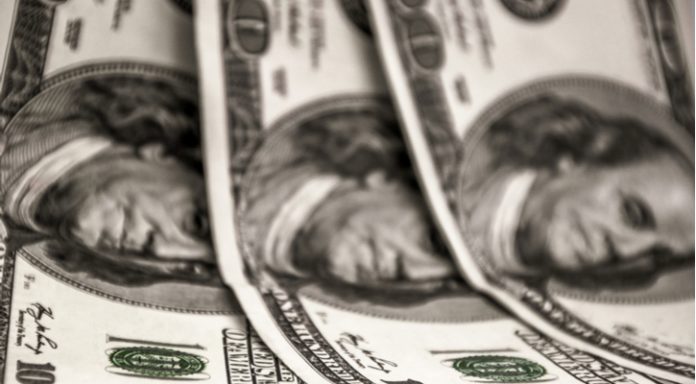Despite slipping in early trade, the pound US dollar exchange rate ended the session in positive territory. The pound initially fell, hitting a low of US$1.4015, before paring losses and reaching a high of US$1.4089.
| What do these figures mean? |
|---|
|
When measuring the value of a pair of currencies, one set equals 1 unit and the other shows the current equivalent. As the market moves, the amount will vary from minute to minute. For example, it could be written: 1 GBP = 1.28934 USD Here, £1 is equivalent to approximately $1.29. This specifically measures the pound’s worth against the dollar. If the US dollar amount increases in this pairing, it’s positive for the pound. Or, if you were looking at it the other way around: 1 USD = 0.77786 GBP In this example, $1 is equivalent to approximately £0.78. This measures the US dollar’s worth versus the British pound. If the sterling number gets larger, it’s good news for the dollar. |
The pound fell out of favour early on as investors digested news that the UK construction sector had unexpectedly contracted in March. Data showed that UK construction sector activity slowed to just 47, missing analysts’ expectations of 51 and down from February’s reading of 51.7. In the pmi activity readings a figure of 50 separates expansion from contraction in the sector. Yesterday’s disappointing data points to UK construction activity seizing up, hit hard by recent bad weather. Late snow has been frequently cited as a principal reason for the slow down across the industry. The significantly weaker than forecast reading sent the pound sharply lower in early trade
| Why does poor economic data drag on a country’s currency? |
|---|
| Slowing economic indicators point to a slowing economy. Weak economies have weaker currencies because institutions look to reduce investments in countries where growth prospects are low and then transfer money to countries with higher growth prospects. These institutions sell out of their investment and the local currency, thus increasing supply of the currency and pushing down the money’s worth. So, when a country or region has poor economic news, the value of the currency tends to fall. |
Economic data will remain in focus today as market participants look towards service sector activity. Analysts are also expecting that activity in the service sector will have slowed in March. Given the dominance and importance of the service sector in the UK economy, any slowdown could put the pound under pressure once more.
Bullard & Data Weaken Dollar
Demand for the dollar weakened across the course of the previous session. Firstly, weaker than forecast US data piled pressure on the greenback. US data showed that non-manufacturing sector of the economy performed slightly worse in March than analysts were anticipating. As a result, the dollar sold off.
The dollar selloff was then magnified by comments by St Louis Fed President James Bullard, who was clear in stating that he sees no reason to hike interest rates further. There is no reason to put downward pressure on inflation given that it still remains significantly below target. These comments served to push investor expectations for further interest rates back, weighing on the value of the dollar.
| Why do raised interest rates boost a currency’s value? |
|---|
| Interest rates are key to understanding exchange rate movements. Those who have large sums of money to invest want the highest return on their investments. Higher interest rate environments tend to offer higher yields. So, if the interest rate or at least the interest rate expectation of a country is relatively higher compared to another, then it attracts more foreign capital investment. Large corporations and investors need local currency to invest. More local currency used then boosts the demand of that currency, pushing the value higher. |
Today investors will be looking towards the US initial jobless claims release prior to the non-farm payroll on Friday, the highlight of the economic calendar.
|
This article was initially published on TransferWise.com from the same author. The content at Currency Live is the sole opinion of the authors and in no way reflects the views of TransferWise Inc. |





